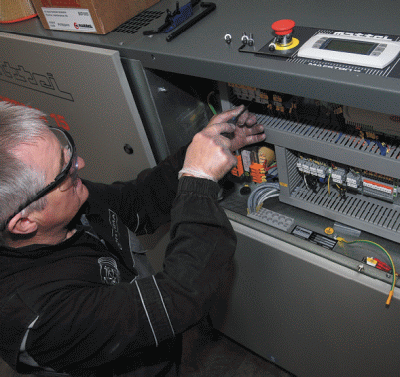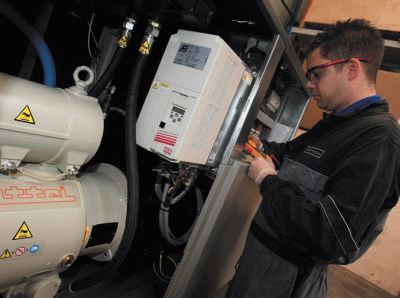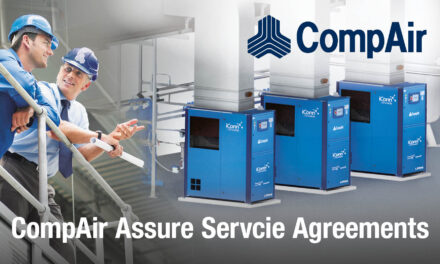 Compressed air is the UK’s fourth utility, and as such it is widely used in industry for many purposes. Like other utilities, particularly gas and electricity, it must be used with care, as it can pose dangers if used incorrectly. Here Andy Jones from Mattei provides some advice on how to use compressed air correctly and safely
Compressed air is the UK’s fourth utility, and as such it is widely used in industry for many purposes. Like other utilities, particularly gas and electricity, it must be used with care, as it can pose dangers if used incorrectly. Here Andy Jones from Mattei provides some advice on how to use compressed air correctly and safely
Plants and factories are well aware of the dangers surrounding gas and electricity and will usually have processes in place to ensure the safety of those working with, and around, these utilities. However, anecdotal evidence suggests that the same level of care is not always applied to compressed air usage, which is a cause for concern.
While factory and floor managers may understand the risks, it is important this information is filtered down to anyone who uses or has access to compressed air. There will be many employees who will need to use the utility for some part of their work, so it is important to establish who these people are and that they understand how to use it correctly.
Those with overall responsibility for compressed air should establish what it is being used for. There will be numerous legitimate uses, such as air tools, but we still hear of cases where people are using it to dust off machinery, work benches and even their clothes. By highlighting the risks to those who are using compressed air incorrectly, it can help to stop the practise and ensure it’s used safely.
So what are the risks? While it may sound sensationalist, the improper use of compressed air can in fact cause fatalities. For example, if it penetrates the skin and gets into the bloodstream, an air bubble could reach the heart and lungs, which could result in death. It is for this reason that compressed air should never be pointed towards anyone, and should not be used to dust off any equipment or clothing.
There are also risks of injury to be aware of. As it travels at a phenomenal speed, if it hits an eye or an ear it may lead to blindness or loss of hearing. However, these incidents can easily be avoided by simply being careful.
 It is also important for those with responsibility for compressed air to make sure employees are protected from noise. For those purchasing a compressor, or relocating an existing one, noise levels should be considered when siting the machine to ensure that employees will not be affected. All compressor manufacturers have to state the noise levels in accordance to international standards, with the current one being ISO2151:2008. This means it is relatively straightforward to check the suitability of a compressor for a particular environment.
It is also important for those with responsibility for compressed air to make sure employees are protected from noise. For those purchasing a compressor, or relocating an existing one, noise levels should be considered when siting the machine to ensure that employees will not be affected. All compressor manufacturers have to state the noise levels in accordance to international standards, with the current one being ISO2151:2008. This means it is relatively straightforward to check the suitability of a compressor for a particular environment.
It is not just incorrect use that can pose a threat to the health and safety of employees. Undertaking regular services and necessary maintenance will also reduce risks. If a compressed air system is not properly and regularly maintained then it could end up posing a danger to employees. In very extreme cases a poorly maintained compressor might even explode.
It is for this reason that written schemes of examinations are a legal requirement under the Pressure Systems Safety Regulations 2000. The document contains a wide range of information, including the parts of the system that need to be examined, the nature of the examination required, the preparatory work needed and the maximum interval between examinations. In Mattei’s experience, there seems to be many organisations that are not aware of this legal requirement. But with a potential fine of up to £20,000 for not having this document, those responsible for compressed air systems would be advised to familiarise themselves with it and have a written scheme of examination drawn up.
Employers have a duty of care to their employees and should provide training and guidelines on how to safely use compressed air. So to protect their staff from injuries and the company from any potential liability, those responsible for the compressed air system will benefit from ensuring all employees understand the risks and comply with safety guidelines. Mattei is a member of BCAS and can offer advice on the type of industry related training courses available.
It is simply a case of ensuring all necessary actions are taken, as is the case when using gas or electricity, to reduce risks and make sure everyone who uses compressed air is responsible and thinks about the potential consequences of careless use.



